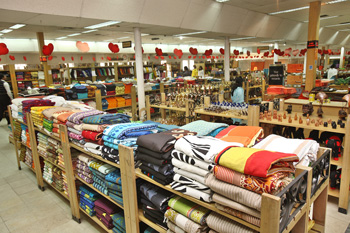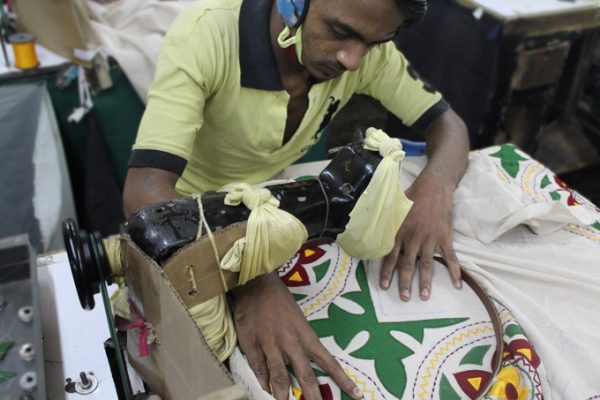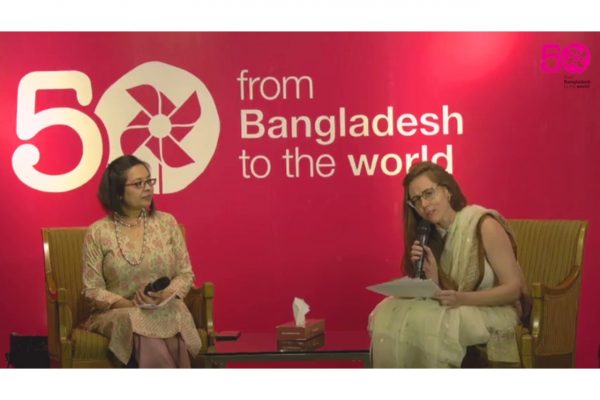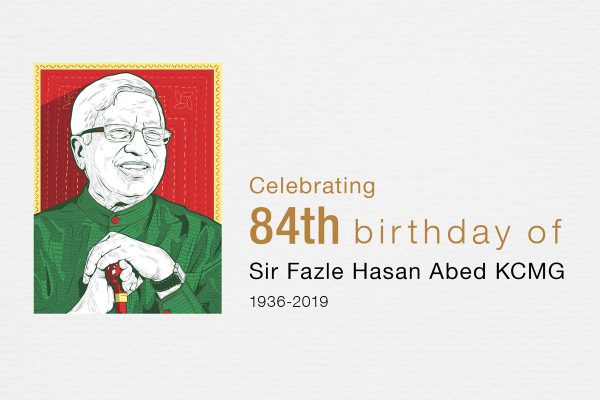Aarong: More than just a store
Reading Time: 3 minutes
As customers enter Aarong retail stores, they are met by fine textiles and handicrafts that the brand strives to preserve. But what goes on behind the retail front and how do these iconic products come into being?
 As customers enter Aarong retail stores, they are met by fine textiles and handicrafts that the brand strives to preserve. But what goes on behind the retail front and how do these iconic products come into being?
As customers enter Aarong retail stores, they are met by fine textiles and handicrafts that the brand strives to preserve. But what goes on behind the retail front and how do these iconic products come into being?
Aarong ensures the livelihood of over 65,000 artisans (85 per cent women) and their families, directly benefiting approximately 320,000 people. Here are some of the individuals who make Aarong more than just a store.
Maruf our designer
Since its establishment, Aarong has succeeded in creating and popularising products that celebrate the rich cultural heritage of Bangladesh through traditional arts and crafts. Today this pioneering and revered brand attracts talented designers, like Kamal Ahmed Maruf, from across Bangladesh. Designers must combine Aarong’s unique style with innovation in order to please current-day market demands. They must also know how to provide the right work to the right producers.
Maruf personalises household-product designs for specific producers by taking their capabilities and skills into consideration. Maruf uses this opportunity to promote skills development, encouraging his producers to try more challenging and innovative designs. One of Maruf’s most talented producers is a young entrepreneur named Prithwa who makes household textiles. Prithwa was anxious about some mistakes she made in a new, complicated design, but Maruf persuaded her to keep on trying. This particular bed-quilt design is now Prithwa’s bestselling product, ensuring a steady flow of orders and source of income.
Maruf says he gets his motivation from his producers; his wish is to ensure and fulfil their financial needs, pushing him to create popular and original designs to catch the consumers’ eye.
Prithwa our producer
Married at 16 years of age, Prithwa found that her husband’s income was not enough to support them. Eager to find a job, Prithwa was inspired by Aarong’s mission to preserve traditional handicrafts. When she first approached them with her textile samples, Aarong was impressed by her creativity and helped her secure a deposit. With that money, she was able to establish her own production centre.
Now, 12 years later, Prithwa’s production centre has achieved a high social compliance rating(health and safety evaluation). With a BDT 1.2 million loan that she received from Aarong two years ago, she was able to turn her production centre into an even safer environment for her and her colleagues. Since then she has noticed the positive effects of her actions, particularly the higher quality of work produced by her artisans.
Prithwa shows genuine pride and affection for the enterprise that supported her as a young, determined woman. The costing process for the products she creates ensures that her artisans are paid and that she receives 12 per cent of the profit as well.
Mohammad our artisan
Mohammad Nadim Hossain is second generation Bihari. He and his family live in the Kalapani Bihari camp in Mirpur, Dhaka. Whilst growing up in dire conditions and facing discrimination from mainstream society, Mohammad found himself discouraged from attending school, dropping out at age 12. After, he started working as a hand-embroiderer, earning BDT 3,000 per month. When he met Prithwaat age 19 through their community network, she trained him in machine embroidery, employing him for BDT 9,000 per month. Mohammad can enjoy the benefits of a fair wage due to the costing process that takes place in the Aarong headquarters. This process involves counting each individual stitch in order to assess accurately the time and skill-level required to complete the design.
A synergy that improves lives
Maruf’s innovative designs combining cultural heritage and consumer-needs allow underprivileged women like Prithwa to gain financial security. By enabling Prithwa to open her small, local production centre for household-textiles, Aarong has made it possible for artisans such as Mohammad to work near his home and family. Mohammad takes the opportunity to save his extra income and invests it in his little brother’s future; who dreams of becoming an engineer. “Now I can save some money, but I pay for my younger brother’s schooling too, because, unlike myself, I want him to be able to read and write.”
Sascha Denkinger is the project coordinator for social compliance and producer relations at Aarong.
Heidi Lowe is an intern at Aarong.








